

Damion Smy
Boxy new KGM Musso unveiled to take on HiLux and Ranger ahead of Australian launch
13 Hours Ago
The 2020 Hyundai Veloster disappoints in base trim. Rakish looks simply aren't enough to justify the huge premium over a regular Hyundai i30.
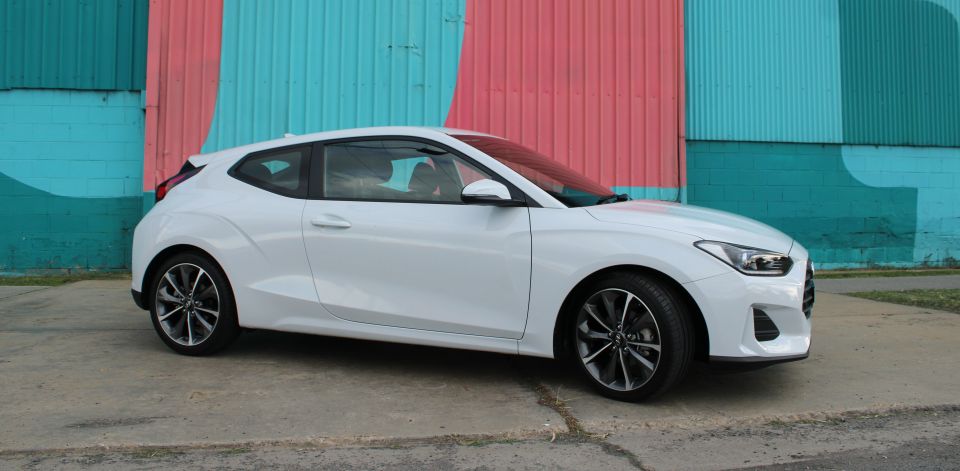
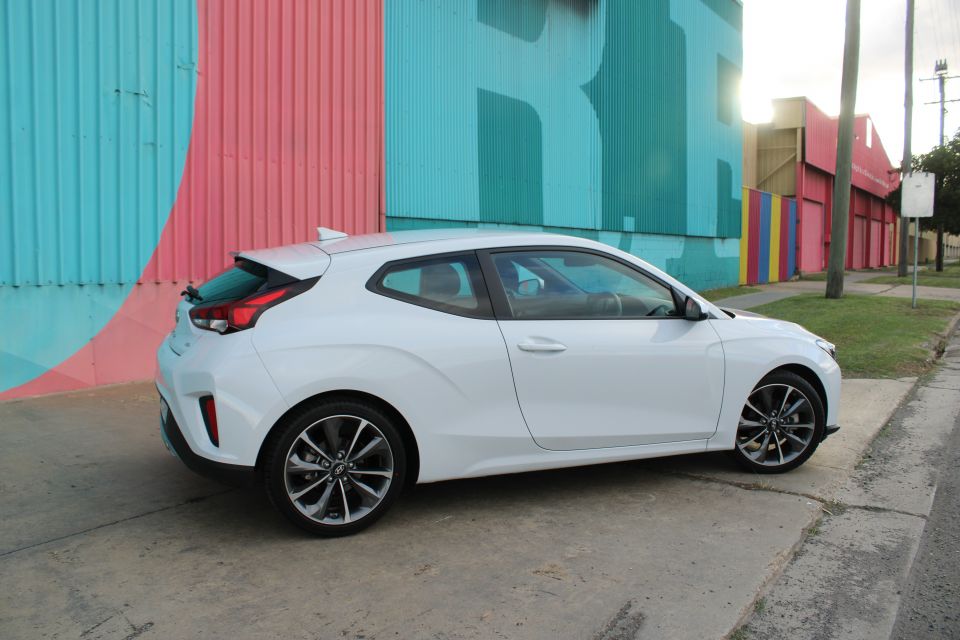

News Editor

News Editor


News Editor

News Editor
Where expert car reviews meet expert car buying – CarExpert gives you trusted advice, personalised service and real savings on your next new car.
Coupes are never a rational choice. In exchange for a sleeker look than an equivalent sedan or hatchback, you typically pay a premium.
While plenty of enthusiasts will gravitate towards a coupe, there are also plenty of shoppers who want a flashier-looking car and aren’t as invested in how it handles and performs.
These are the kinds of people who bought Toyota Paseos, Nissan NXs and base model Toyota Celicas back in the day.


Though the number of coupes has dwindled in recent years as buyers flock to SUVs, Hyundai introduced a redesigned Veloster last year.
Like its predecessor, it takes the run-of-the-mill i30 platform and gives it a squat, aggressive hatchback coupe body.
It’s aimed right at style-conscious buyers who want to stand out in car parks full of mundane hatchbacks.
Style may be subjective but the second-generation Veloster is certainly distinctive.
It’s a handsome thing – especially at the rear with its hunkered-down look – and even the base model scores attractive 18-inch alloy wheels.
The detailing is cleaner than on its polarising predecessor and it looks more cohesive and aggressive. Most importantly for buyers, it looks nothing like the i30 on which it’s based.
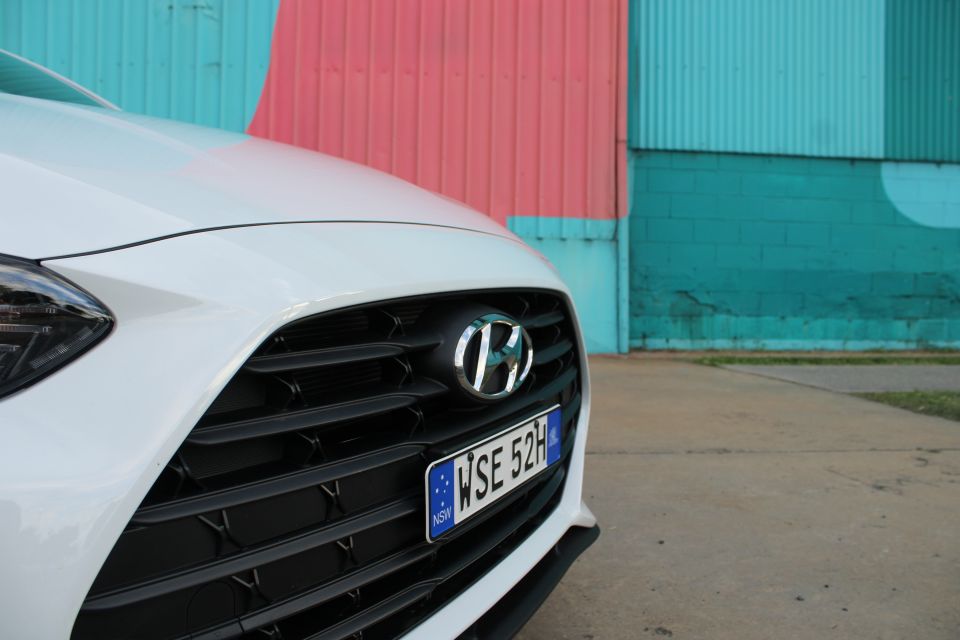
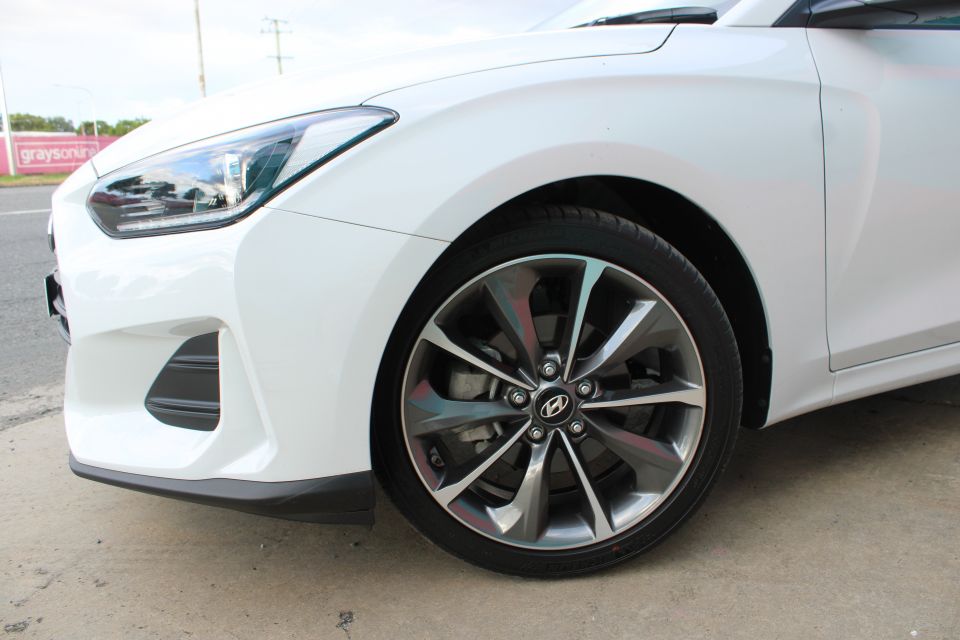
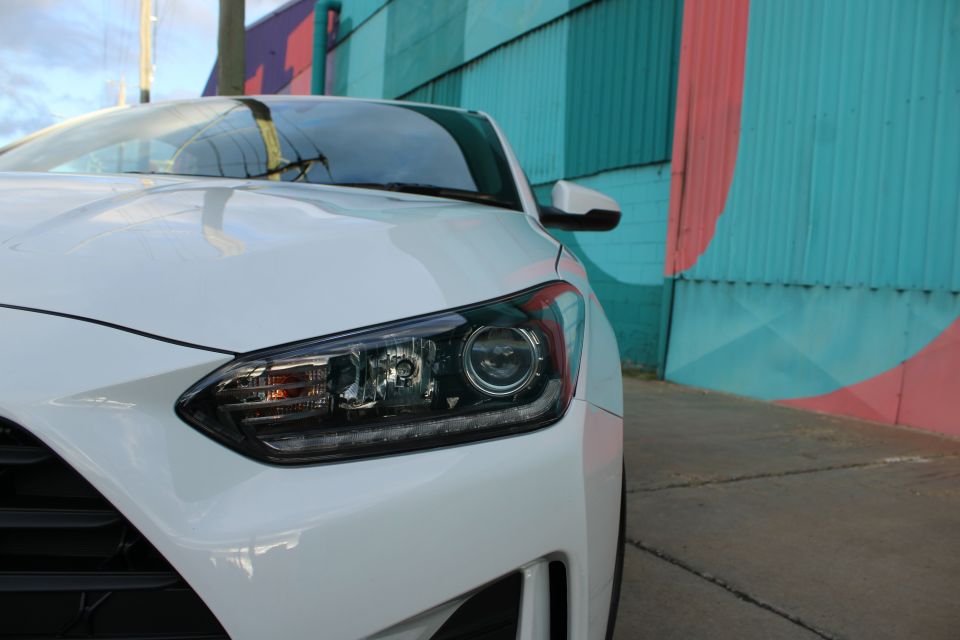
The Hyundai Veloster is available in three different models: the base model, simply named Veloster, and the Turbo and Turbo Premium.
The base Veloster costs $29,490 before on-road costs with a manual transmission or, as featured here, $31,790 before on-road costs with an automatic.
Buy your new car without the stress. It's fast, simple and completely free.

Great service from Travis and team, second time I have used this business would not hesitate to recommend them to anyone
Craig C.
Purchased a Ford Ranger in Sunshine Coast, QLD
CarExpert helped Craig save thousands on his Ford Ranger, now let us save you on your next new car.
Find a dealCompared with the mechanically-related i30 range, the Veloster’s equipment levels fall somewhere between the base i30 Go and the i30 Active.
That means a 7.0-inch touchscreen infotainment system with Android Auto and Apple CarPlay but no satellite navigation, as well as a reversing camera and rear parking sensors, cruise control, and a leather-wrapped steering wheel and shifter.
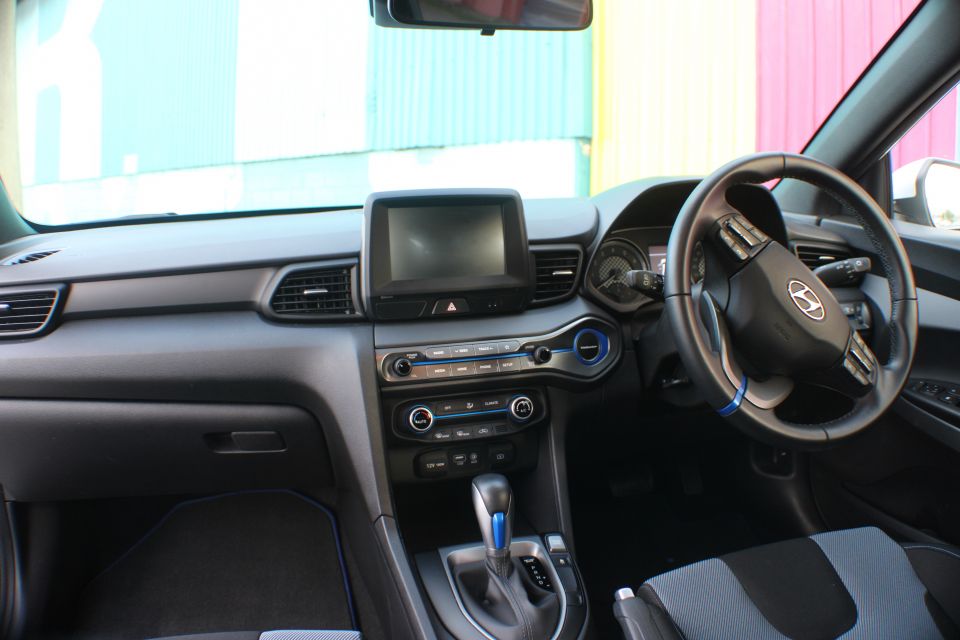
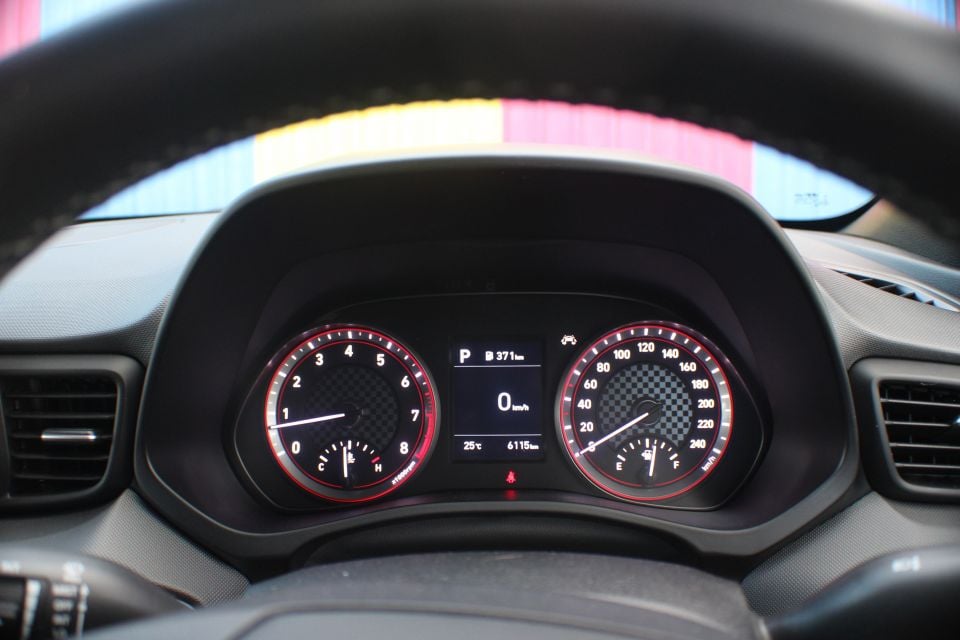
There are 18-inch alloy wheels, unlike those i30 models, but the Veloster lacks the i30 Active’s eight-speaker sound system (it makes do with six), sat-nav and DAB+ digital radio.
It is, however, the only car on this platform to feature this powertrain in conjunction with a multi-link rear suspension. Other Hyundai and Kia products require you to specify the turbocharged 1.6-litre to get this.
You pay a significant premium for the Veloster’s coupe body style. An i30 Active with the same powertrain as our Veloster tester costs just $23,640 before on-roads. That’s a whopping $8000 difference.
The second-generation Veloster was only launched last year and has yet to be tested by ANCAP.
Though we can’t speculate what score it would get, other cars on this platform – such as the i30 – have received five-star ratings.
Standard safety equipment on the Veloster includes autonomous emergency braking (AEB) with forward-collision warning, as well as lane-keeping assist, anti-lock brakes and front, front-side and curtain airbags.
To get blind-spot monitoring and rear cross-traffic alert you need to step up to the Veloster Turbo.
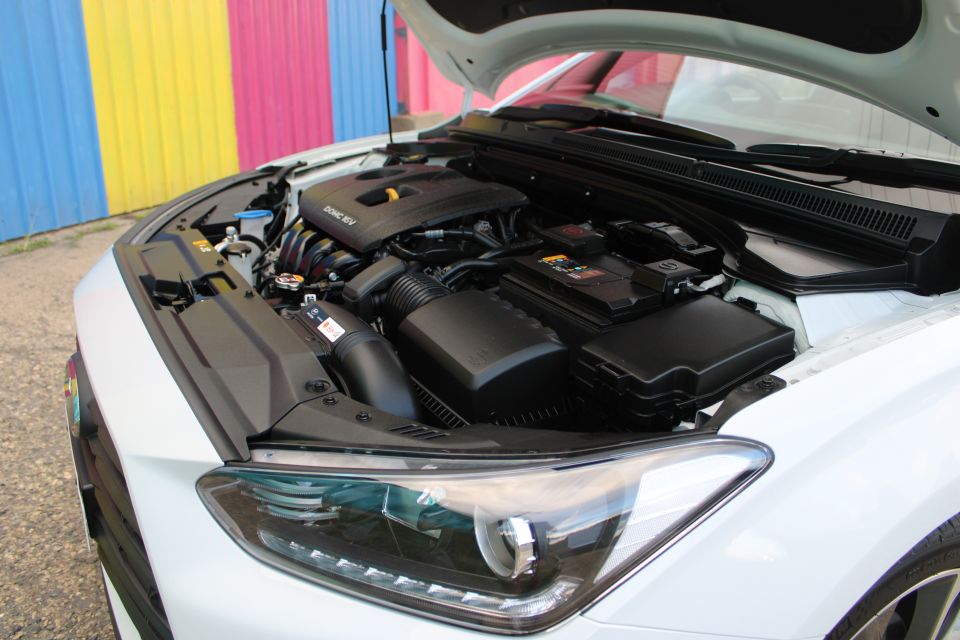
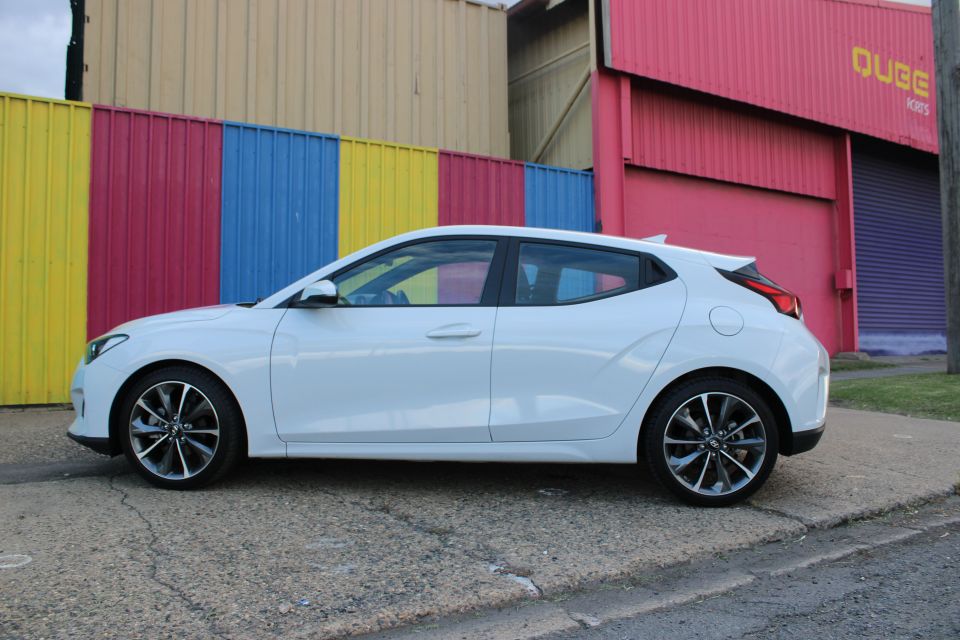
The base Hyundai Veloster is the only member of the range to lack turbocharged power.
Instead, there’s the same naturally-aspirated, double-overhead cam 2.0-litre Atkinson cycle four-cylinder as you’ll find in myriad Hyundai and Kia products.
It produces 110kW and 180Nm and is mated to either a six-speed manual or six-speed automatic transmission.
Much as the Hyundai Veloster looks radically different from any other Hyundai on the outside, so too does it march to a different drum on the inside.
The dashboard has a somewhat funky, asymmetrical look, and there’s blue trim used throughout the cabin, including on the dash, steering wheel, shifter, the stitching on the seats, and the rear seat-back netting. Turbo models replace the blue with red.
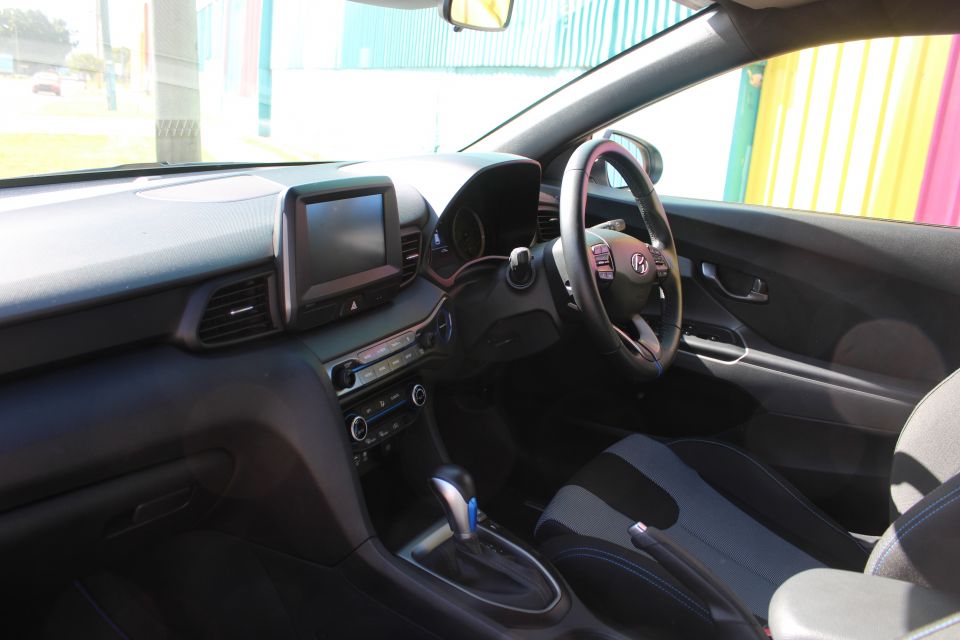
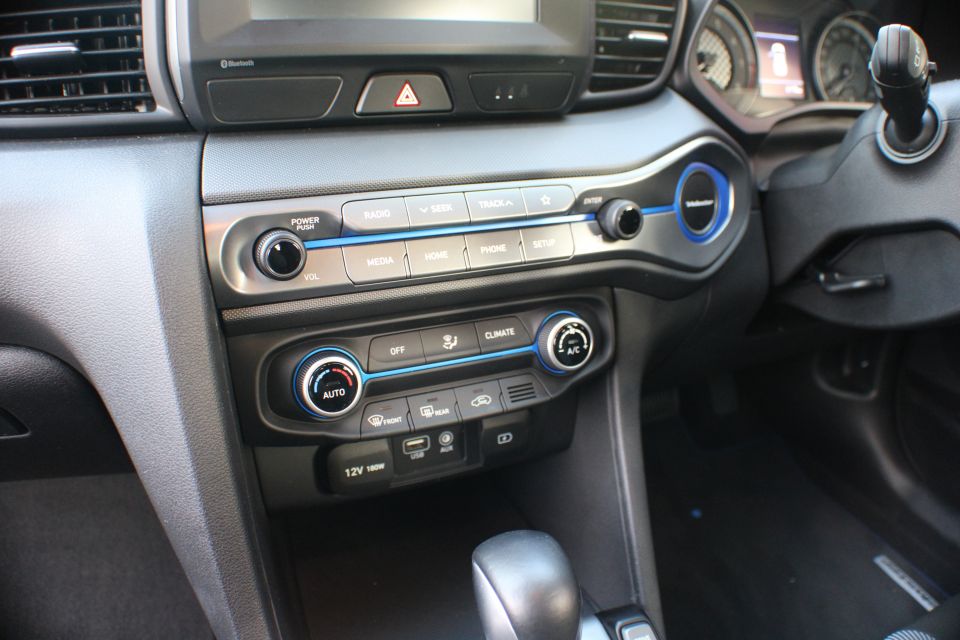
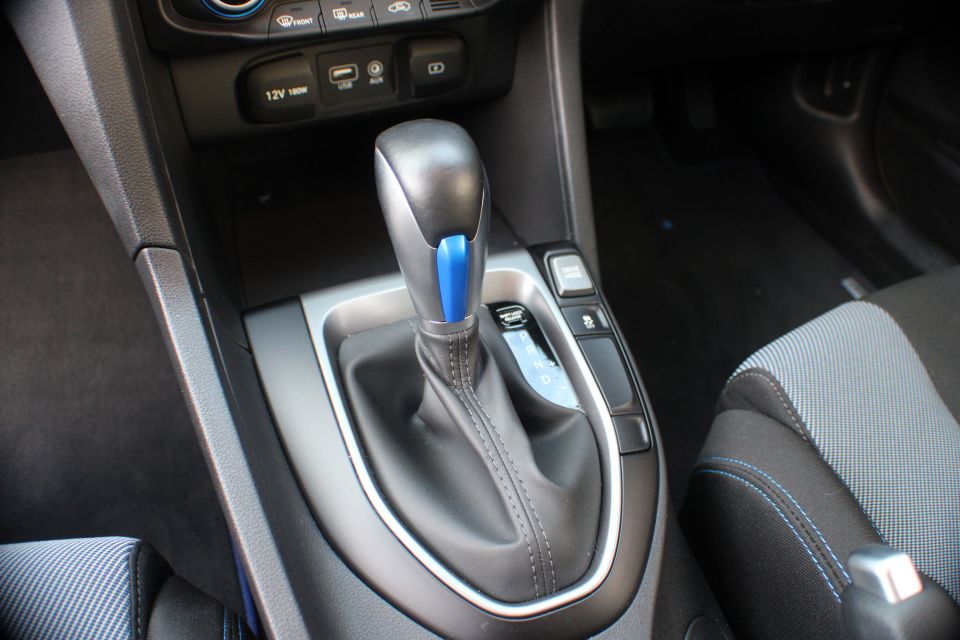
The coloured metallic trim on the Turbo’s dash runs through the stereo switchgear and then encircles the car’s start button.
On the base Veloster, it encircles a round, button-shaped piece of plastic that says Veloster.
Yes, script aside, it’s a button blank, also known as a reminder you bought the base model. You’ll have to turn your key in the ignition, thank you very much.
Another reminder you bought the base model? The 7.0-inch touchscreen. An inch makes all the difference, the 8.0-inch unit lacking the thick bezel of the base Veloster’s unit.
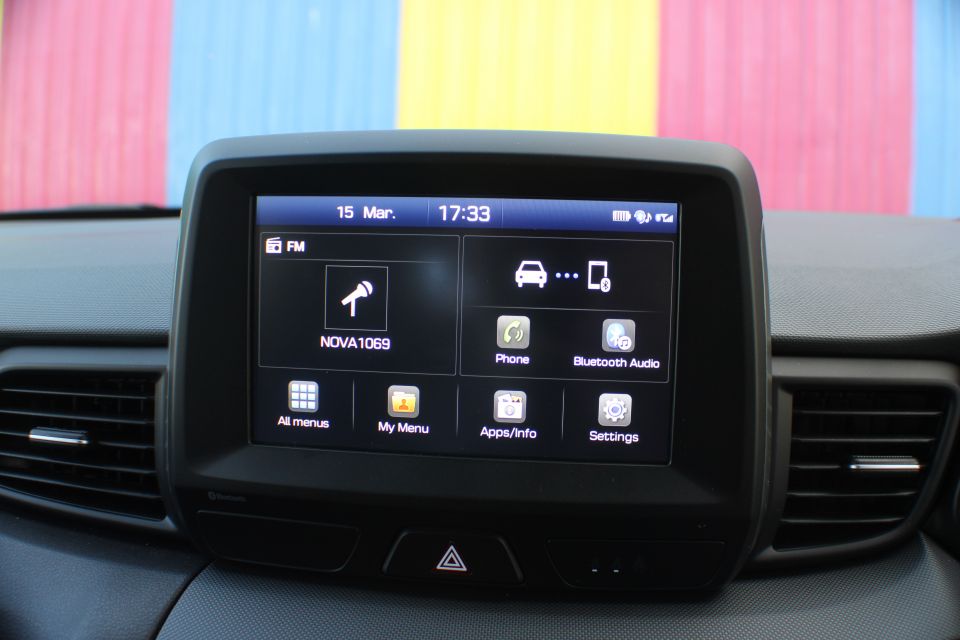
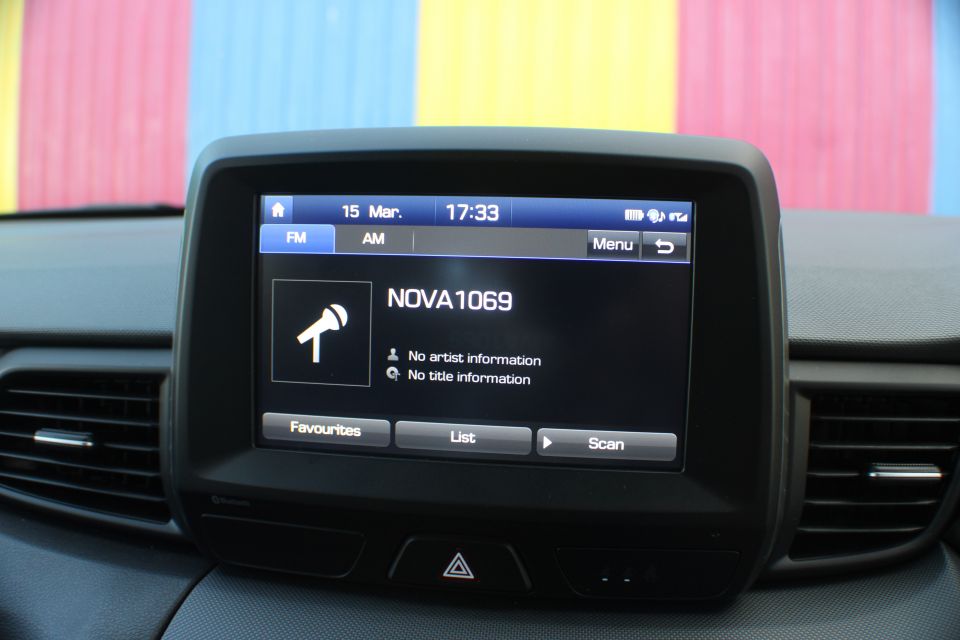
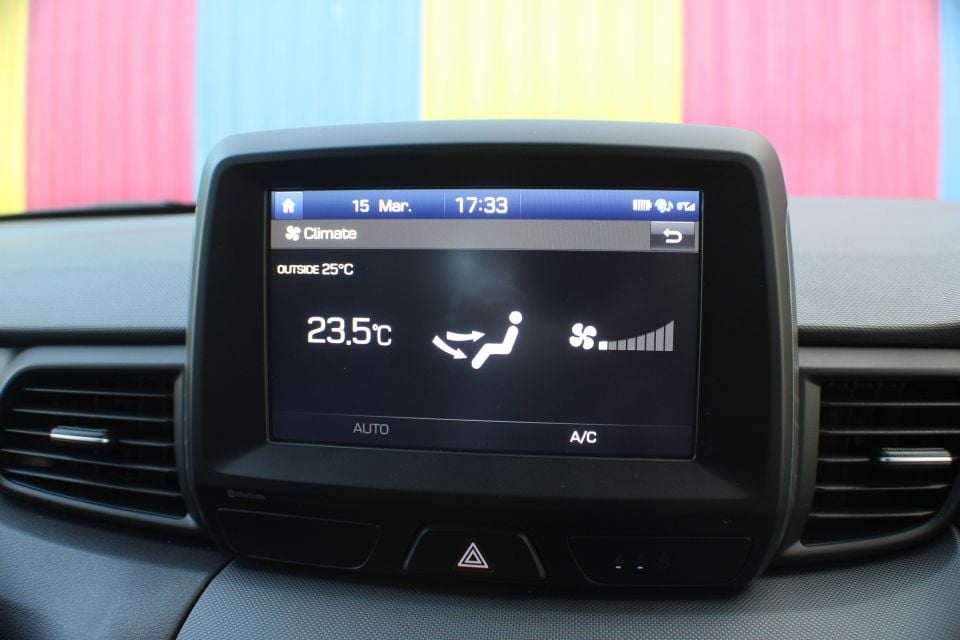
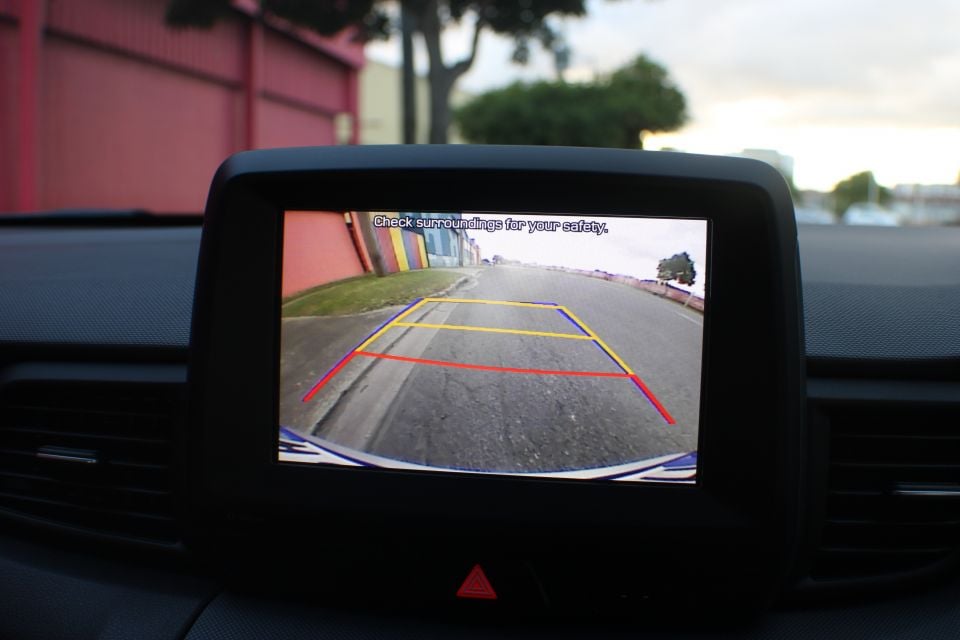
The base model’s blue accent trim is nice but the Veloster could have used some on the doors. Anything to relieve the unbroken expanse of hard, black plastic.
There’s a lot of that in the Veloster’s interior, though the textured plastic used for the dash-top at least looks vaguely interesting.
The plastic at the base of the centre stack, however, is low-grade and has large cutlines. It’s a tie between that and the thin headliner for the title of cheapest-feeling interior piece.
Hyundai advertises the Veloster as a “2+1 coupe” due to a shorter front door and small rear door on the passenger side but a regular coupe-style driver-side door.
The rear passenger-side door also has its handle up next to the C-pillar, as if to disguise that there’s a door.
Hyundai likes to think of the rear passenger-side door as being a ‘bonus door’, but the Veloster is arguably just missing a door.
This stylistic compromise also means the driver-side door is like that of many coupes: long, heavy, and a hassle in a tight parking space.
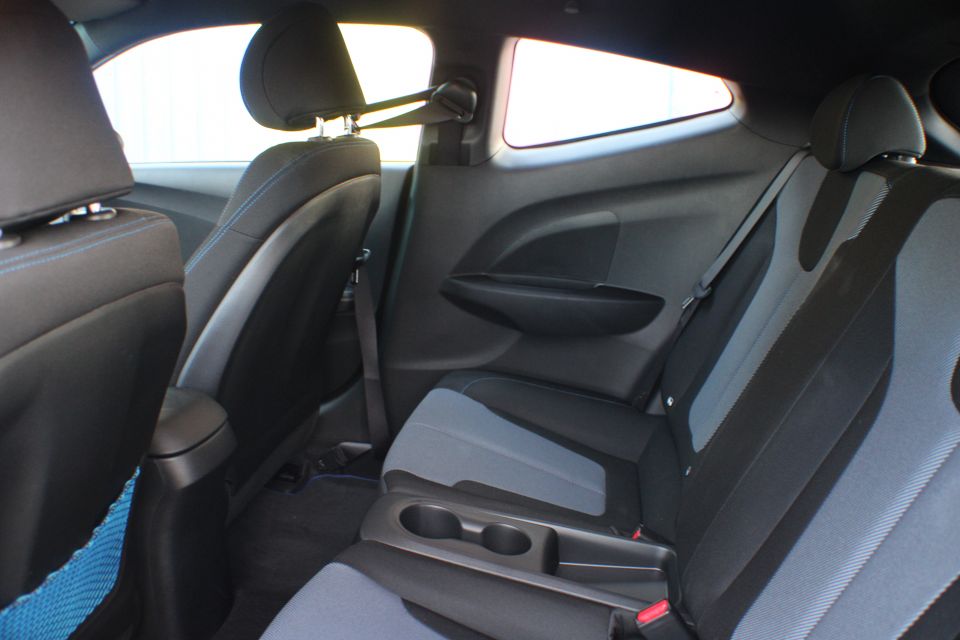

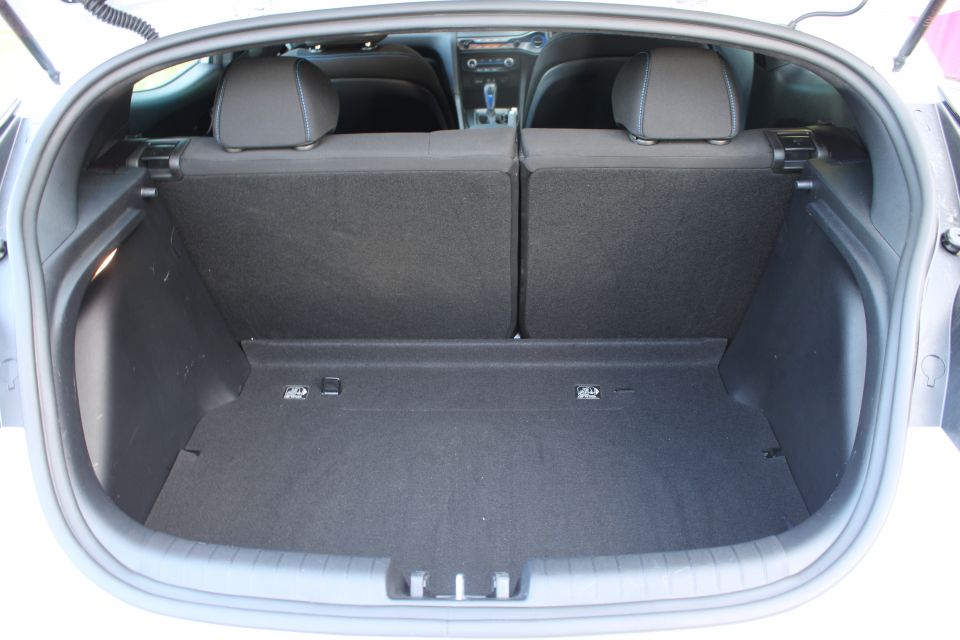

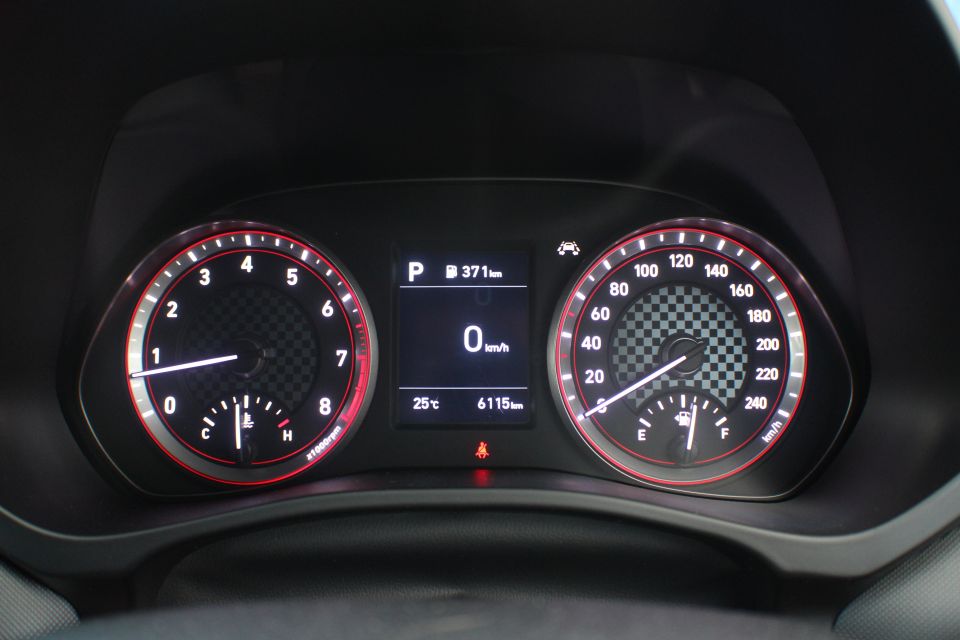
Gripes about the number of doors aside, the rear of the Veloster’s cabin is a surprisingly comfortable place to sit.
The Veloster rides the same 2650mm wheelbase as the i30 so legroom is ample, while the sloping roofline avoids sloping too much. Someone 180cm tall can sit back there and not have to slouch. Though it’s almost as roomy as an i30 in the back, the Veloster is four-seater.
The centre rear seat is replaced with a piece of hard plastic with cupholders. It’s a bit awkward to clamber over if you’re entering via the passenger’s side.
There are two top-tether and ISOFIX anchor points back there for child seats, and the Veloster’s “bonus door” makes it a lot easier for parents to load children into the car. Well, at least from one side.
All seats are upholstered in a pleasant, seemingly hard-wearing cloth trim. The front seats are somewhat flat but nevertheless prove supportive during long drives.
The Veloster’s surprising spaciousness extends to its boot. The lip is quite high but the boot itself is well-sized at 303L, extending to 1081L with the rear seats folded. With the seats up, there’s 66L more cargo volume than a Toyota 86.
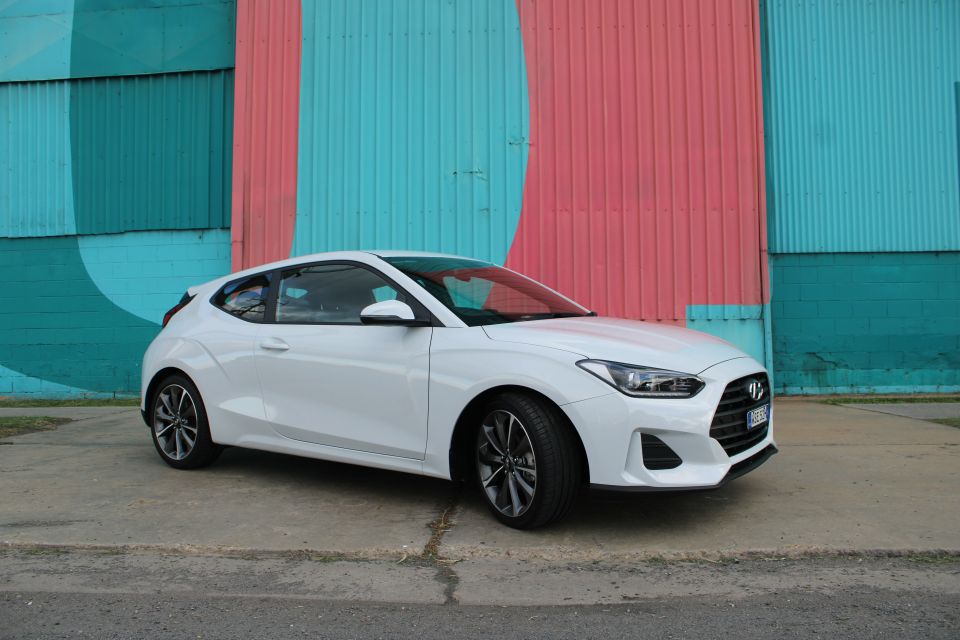

Quite simply, this powertrain doesn’t belong in what’s supposed to be a sporty coupe.
The 2.0-litre four-cylinder is best described as willing but never charming.
It’s coarse when revved and its 110kW and 180Nm is nothing exceptional, especially when the only marginally more expensive Toyota 86 produces 152kW and 212Nm from its atmo 2.0-litre four.
Remember, the Veloster is ostensibly a sports coupe and therefore a rival to the similarly-priced 86.
Someone looking for a relatively inexpensive, sporty-looking coupe who doesn’t know or care about the difference between front- and rear-wheel drive may cross-shop these two.
Putting the Veloster in sport mode reveals the weaker link in the car’s powertrain is the torque-converter automatic transmission.
In normal mode, it’s dozy and has a tendency to get bogged down and confused in aggressive driving. The shifts are somewhat abrupt, too.
The Veloster can feel sluggish, while hilly terrain has the transmission hunting for gears. In sport mode, the Veloster’s throttle response and shift pattern is dramatically improved. The car suddenly finds some beans.
A pity, then, that the engine doesn’t sound any better in sport. It’s just as noisy and uninspiring to one’s ears as in normal.
There’s also very little difference in steering feel between modes. Regardless of mode, however, the steering is light and direct, though a little extra weighting in sport mode wouldn’t go astray.
The Veloster handles well, with good grip and cornering ability. Mind you, it doesn’t feel terribly different from an i30 but these are solid bones. The chassis can – and does – handle more power.
Unfortunately, the base powertrain sucks the fun out of the Veloster.
Frustratingly, even in day-to-day driving there are compromises with the Veloster. Wind noise on the highway, for example, is excessive, while tyre noise can also prove an irritation.
The ride can occasionally be a bit fidgety, even though the Veloster nixes the regular i30’s torsion-beam rear axle for a multi-link set-up. For the most part, it tends to be well-damped and comfortable.
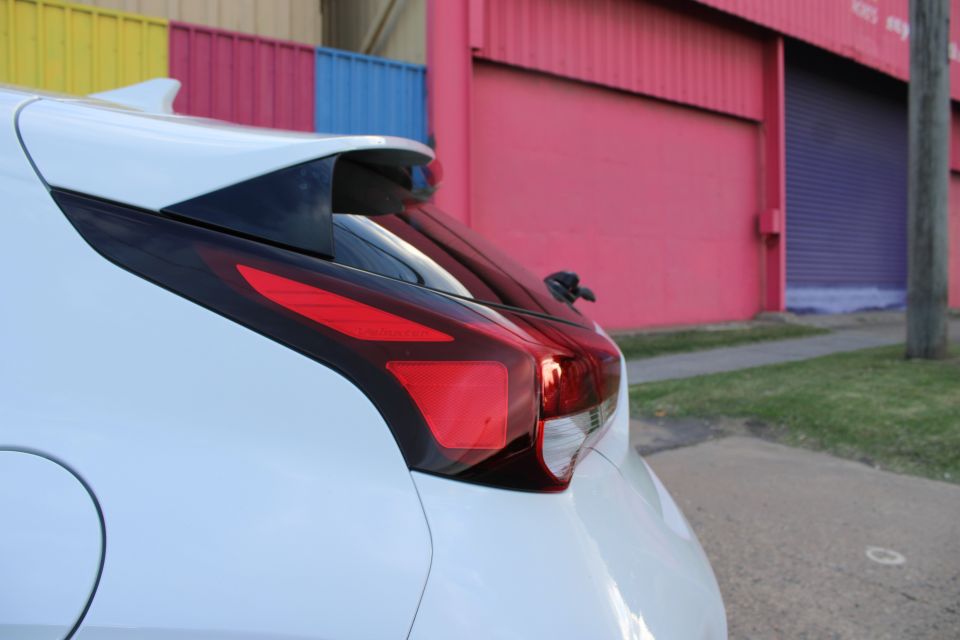

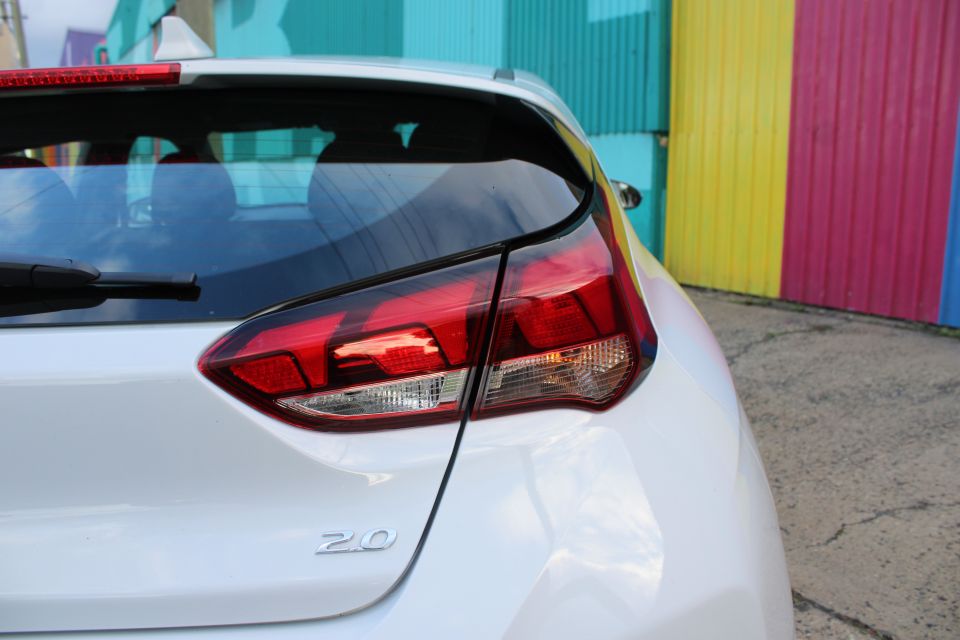
The lane-keeping assist performs adequately – some of Hyundai’s other products are calibrated better – but it can’t be turned off permanently. Restarting the car always reactivates it.
In a mix of city and highway driving, the Veloster averaged 11.4L/100km. That’s significantly off from its combined cycle rating of 7.1L/100km, an indicator of how much the car had to be prodded to deliver.
In addition to a five-year, unlimited kilometre warranty, Hyundai offers a Lifetime Service Plan with capped-price services.
The average cost of a service over the first five years is $332 for the base Veloster, with intervals of 12 months or 15,000km, whichever comes first.
The base Hyundai Veloster feels like little more than an i30 in a party frock.
Its powertrain is somewhat disappointing but acceptable in an i30 or Cerato. In what’s supposed to be a sporty coupe, it’s out of its depth.
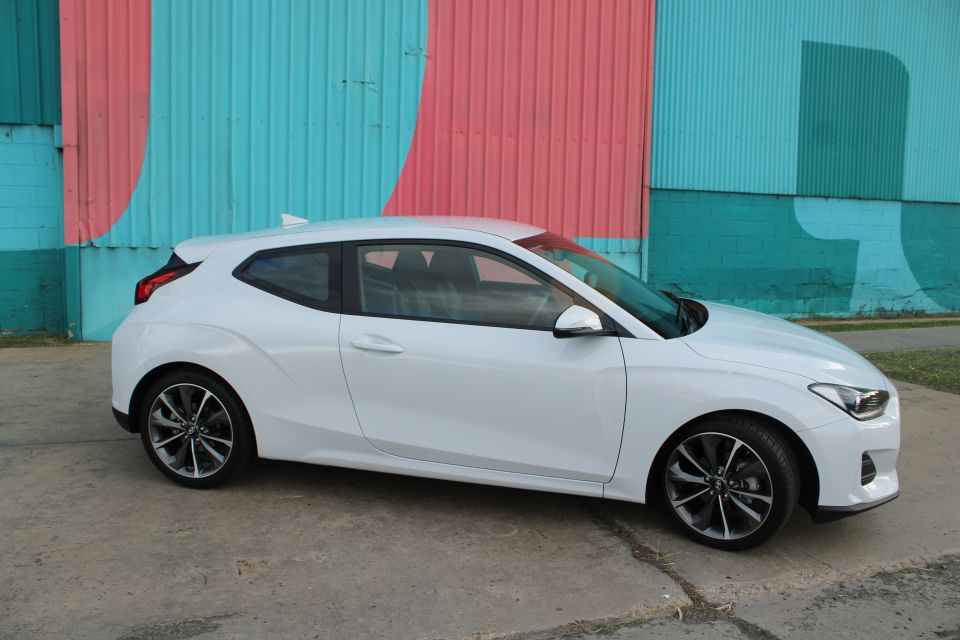
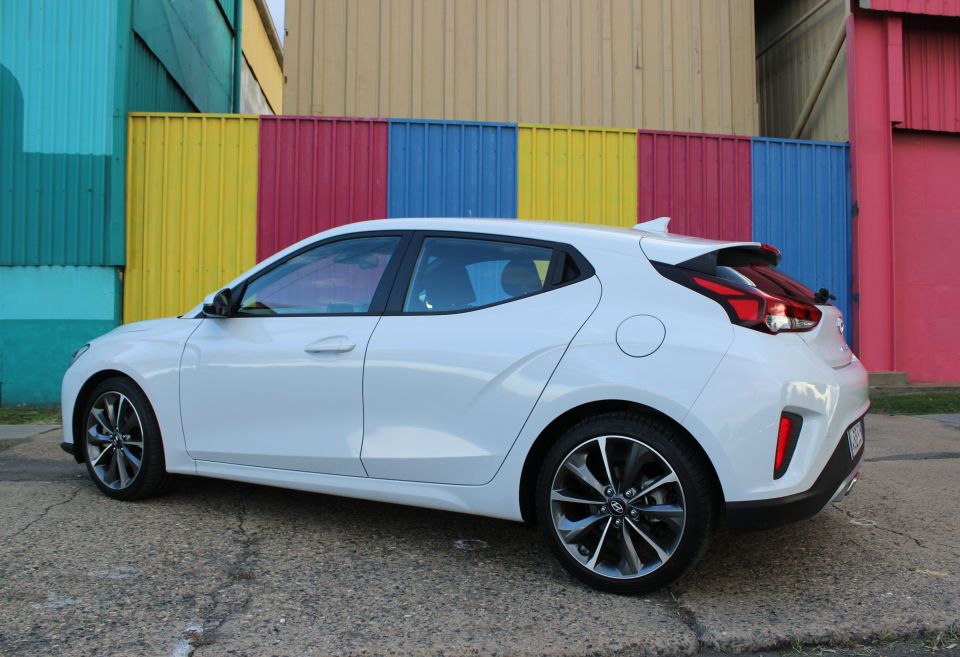
Let’s not forget, either, that this is around $8000 more than an equivalently-specced i30.
Coupes often command a premium for extra style but that’s an aching chasm between prices.
At $31,790, the Veloster auto is $2k more expensive than an i30 N-Line automatic which has the same multi-link rear suspension but a more powerful turbocharged 1.6-litre four.
The N-Line’s appearance package also goes some way in distinguishing it from more humdrum i30 models, if that’s a concern.
If you’re only after a sporty-looking car and don’t find dynamics to be as important an attribute, you may be happy with the base Veloster.
Ultimately, however, it doesn’t have the performance expected of a sporty coupe and it simply demands too much of a premium over an i30.
Where expert car reviews meet expert car buying – CarExpert gives you trusted advice, personalised service and real savings on your next new car.
William Stopford is an automotive journalist with a passion for mainstream cars, automotive history and overseas auto markets.


Damion Smy
13 Hours Ago


Damion Smy
15 Hours Ago


Damion Smy
16 Hours Ago


Damion Smy
18 Hours Ago


Damion Smy
20 Hours Ago


Damion Smy
21 Hours Ago